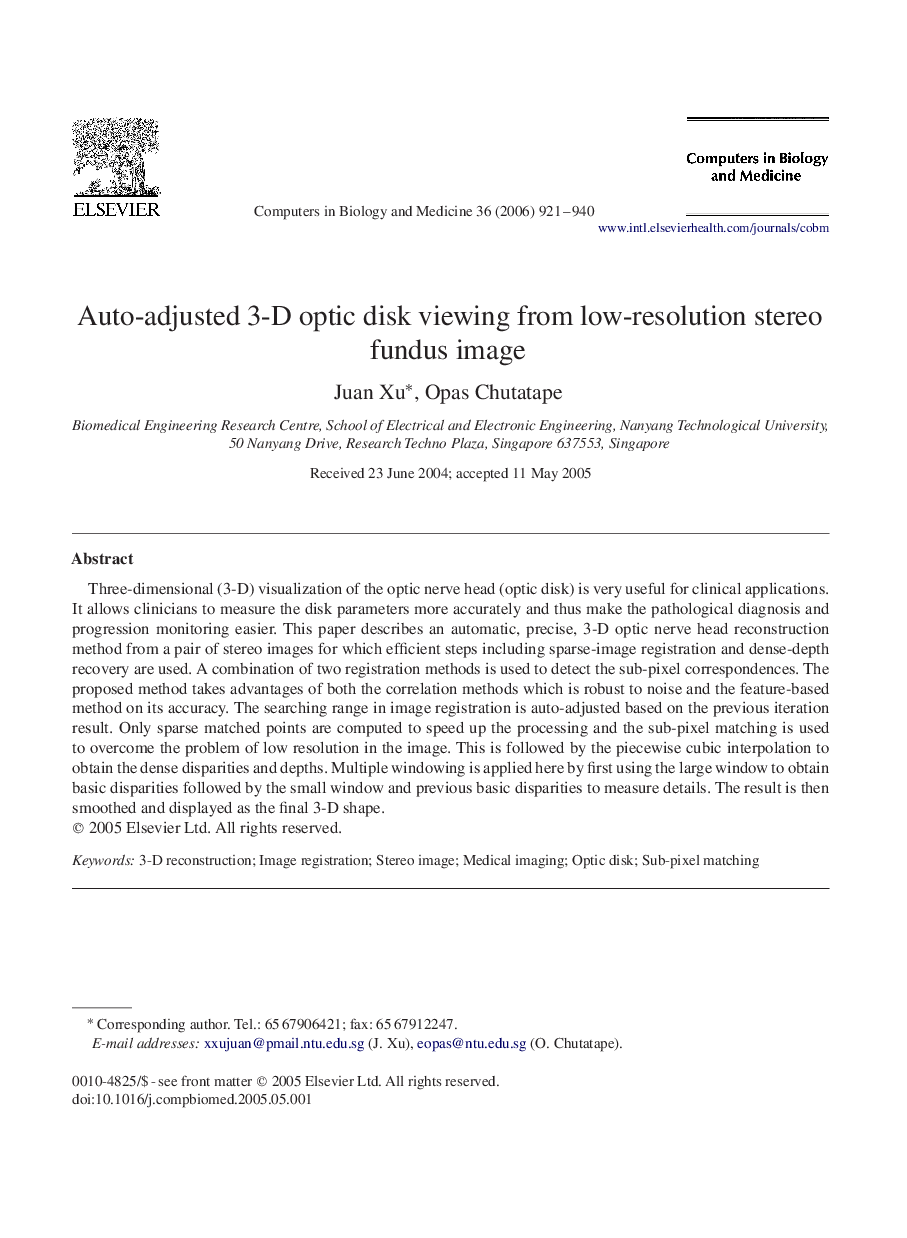| Article ID | Journal | Published Year | Pages | File Type |
|---|---|---|---|---|
| 505973 | Computers in Biology and Medicine | 2006 | 20 Pages |
Three-dimensional (3-D) visualization of the optic nerve head (optic disk) is very useful for clinical applications. It allows clinicians to measure the disk parameters more accurately and thus make the pathological diagnosis and progression monitoring easier. This paper describes an automatic, precise, 3-D optic nerve head reconstruction method from a pair of stereo images for which efficient steps including sparse-image registration and dense-depth recovery are used. A combination of two registration methods is used to detect the sub-pixel correspondences. The proposed method takes advantages of both the correlation methods which is robust to noise and the feature-based method on its accuracy. The searching range in image registration is auto-adjusted based on the previous iteration result. Only sparse matched points are computed to speed up the processing and the sub-pixel matching is used to overcome the problem of low resolution in the image. This is followed by the piecewise cubic interpolation to obtain the dense disparities and depths. Multiple windowing is applied here by first using the large window to obtain basic disparities followed by the small window and previous basic disparities to measure details. The result is then smoothed and displayed as the final 3-D shape.
